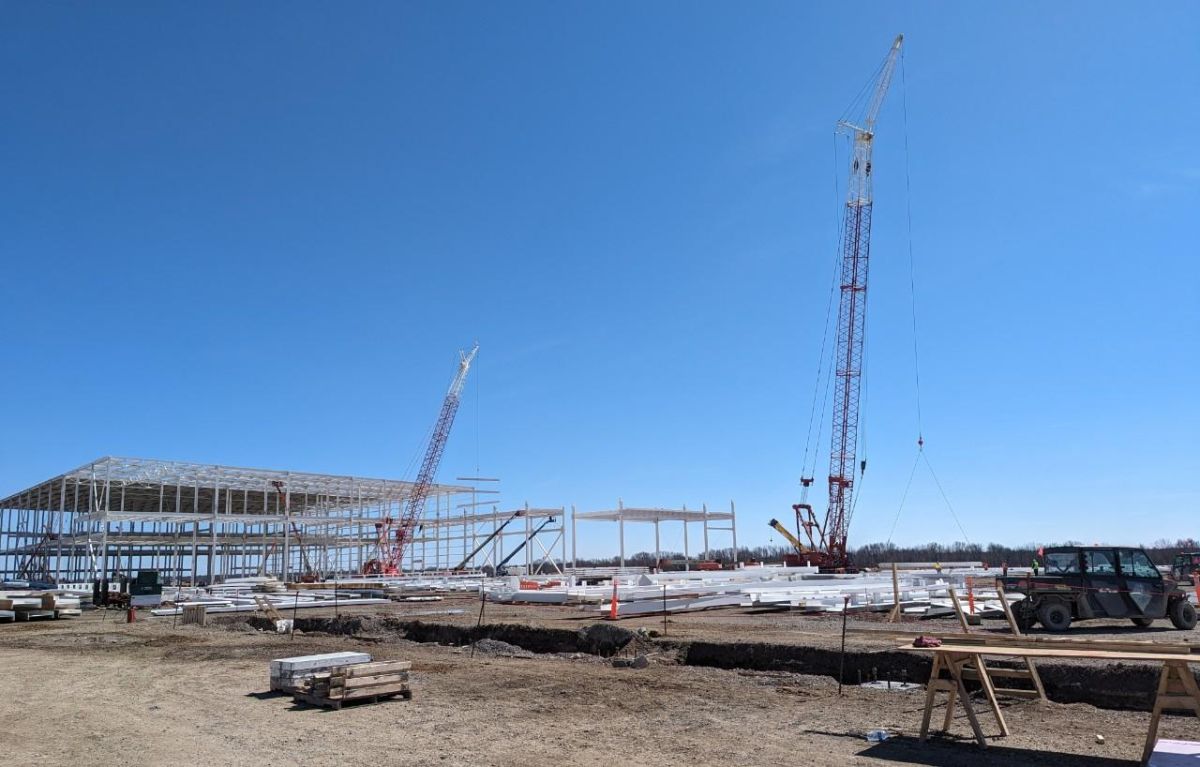Michigan reduced Ford's tax incentives to $409.1 million, down from a previous $1.03 billion, following Ford's recent downsizing of its EV and battery production plans in the state, the Michigan Economic Development Corp. (MEDC) announced.
Ford had initially planned to invest $3.5 billion and create 2,500 jobs at its EV battery factory in Marshall, MI. However, the automaker scaled back those plans to an investment range of $2.5 billion to $3 billion and job creation to between 1,700 and 2,100 positions. As a result, the MEDC revoked $772.8 million in a 15-year Renaissance Zone tax break and an additional $100.8 million in grant money tied to unmet job creation targets at the Ford Rouge Electric Vehicle Center (REV-C).
“The restructured incentive package will appropriately and necessarily address the project’s rightsizing, balancing the company’s investment and growth in Michigan,” said the MEDC.
Ford has met its broader job creation and investment commitments set in 2022, aiming for $2 billion in spending and 3,260 jobs. However, the REV-C facility, which produces the F-150 Lightning, employs only about 700 workers. The Michigan Assembly Plant has absorbed an additional 700 workers from the REV-C and hired 900 new employees to meet demand for the Bronco and Ranger models.
Ford remains on track to begin production of lithium iron phosphate (LFP) batteries at the Marshall facility by 2026, with construction approximately 20% complete.
In the second quarter, Ford's EV sales surged 61% year over year, positioning the automaker as the nation's second-largest EV seller behind Tesla.
Ford Cancels 3-Row SUV EV, Targets Hybrids, More Affordable EVs
Ford canceled plans for an all-electric three-row SUV and delayed the launch of a new full-size electric pickup truck, saying it will instead focus on introducing a new all-electric commercial van in 2026 and a more affordable midsize EV pickup by 2027.
In place of the canceled electric SUV, Ford plans to offer a hybrid version, responding to consumer preferences for long-range travel options in larger vehicles. This shift, however, comes at a cost. Ford will take a non-cash charge of approximately $400 million due to the write-down of certain manufacturing assets, along with potential additional expenses of up to $1.5 billion.
Earlier in the summer, Ford announced it will release new EVs by 2026 based on a new EV architecture focused on cost reduction and efficiency, using lithium iron phosphate (LFP) batteries, known for their durability and cost-effectiveness.
The first of these new EVs is expected to debut in the U.S. by late 2026 or early 2027, with plans for subsequent launches in Europe.
“You’re taking $20-$30 per kilowatt hour out of the battery; [Chinese automaker] BYD has been able to get more. With a 100kWh battery, that’s a lot [of cost out]. But if you’re someone who charges a lot, the battery is far more durable and can take probably five times the duty cycles. These batteries are basically indestructible,” said Marin Gjaja, COO of Ford’s Model E division, in an interview with Autocar.
“If you look at our lineup globally, at this point we don’t really have much in the affordable segment. The key for us is to be affordable, differentiated and profitable,” Gjaja said.
Ford's move to LFP batteries and a new EV architecture marks a step towards competing in the low-cost EV market, currently dominated by manufacturers with inexpensive production bases like China. Gjaja further emphasized the need for innovation, hinting that Ford's future EVs might break away from traditional designs.













